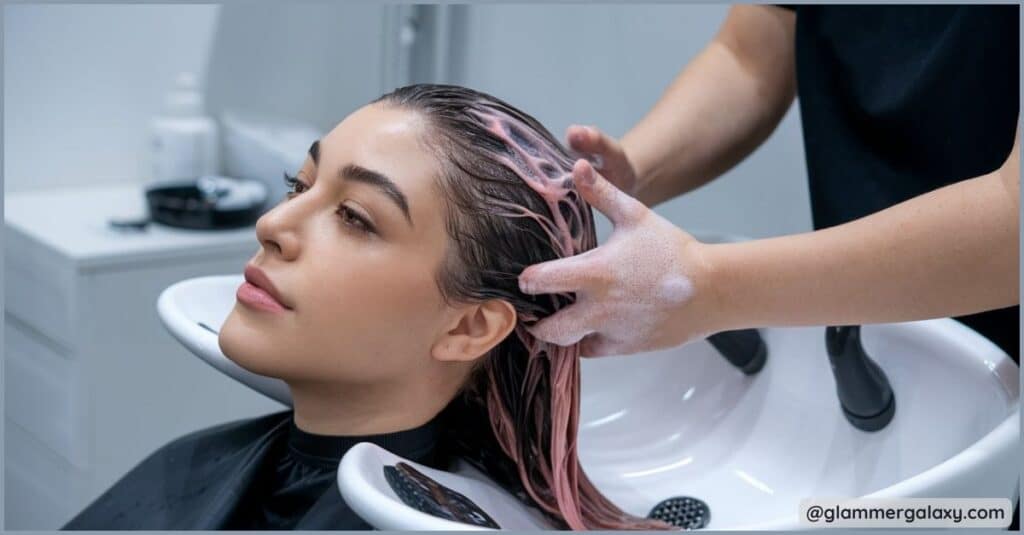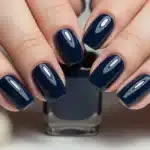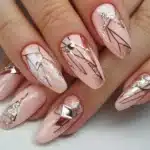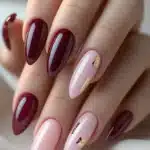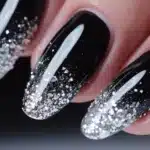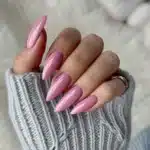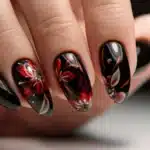Are you on a hair adventure that involves toner? You’re not alone! Many of us embark on exciting hair journeys, and toners play a crucial role in achieving that perfect shade. But what happens to hair after toner washes out?
We will explain the answer to this question in this article.
The Basics of Hair Toner
Let’s kick off our hair care exploration by diving into the world of toners. These magical potions can transform your locks, but it’s essential to know what they are and how they work.
What Is Hair Toner?
Hair toner is a hair care product used to alter the undertones of your hair color. It’s not a dye, but rather a subtle colorant that can neutralize unwanted tones or add a desired hue. Toners are especially popular among those with blonde hair, but they’re not exclusive to blondes!
Toners come in various forms, including:
- Liquid toners
- Toning shampoos
- Toning conditioners
- Toning masks
Each type serves a specific purpose in your hair color journey, allowing you to customize your approach based on your needs and desired results.
“Toner is the secret weapon in a colorist’s arsenal to create the perfect shade.” – Renowned hairstylist, Lisa Adams
How Toner Works on Hair
Toner works by depositing color pigments onto the hair shaft. These pigments are typically semi-permanent or demi-permanent, which means they’ll gradually wash out over time. The science behind it is fascinating:
- Toner penetrates the hair cuticle
- Color molecules bond with the hair’s proteins
- The result is a subtle shift in hair color
The process is gentler than traditional hair dyeing, making it an excellent option for those who want to refine their color without causing excessive damage.
Common Ingredients in Toners
Understanding what’s in your toner can help you make informed decisions about your hair care routine. Here’s a quick rundown of common toner ingredients:
- Ammonia or ammonia-free alternatives: These help open the hair cuticle for color penetration
- Peroxide (in low concentrations): Acts as a developer to activate the toner
- Pigments (various colors depending on the desired effect): The actual coloring agents
- Conditioning agents: To keep hair healthy and smooth
- Water: The base for most liquid toners
- Alcohol: Sometimes used as a solvent in some formulations
It’s important to note that the exact ingredients can vary significantly between brands and types of toners. Always check the label if you have specific concerns or sensitivities.
Types of Hair Toners
Not all toners are created equal! Let’s explore the different types you might encounter on your hair journey.
Permanent Toners
Permanent toners are the most long-lasting option, designed to create a significant change in your hair color.
Pros:
- Long-lasting results (typically 6-8 weeks or more)
- Can make significant color changes
- Ideal for covering grays or making dramatic shifts in tone
Cons:
- Contains stronger chemicals like ammonia
- May cause more damage to hair due to the intensity of the process
- Requires more commitment as it grows out
Demi-Permanent Toners
Demi-permanent toners offer a middle ground between permanent and semi-permanent options.
Pros:
- Gentler on hair than permanent toners
- Fades gradually, reducing the appearance of harsh root lines
- Lasts about 24-28 shampoos
- Can enhance natural hair color or add subtle changes
Cons:
- Shorter-lasting than permanent toners
- May not cover grays as effectively
- Requires more frequent touch-ups for maintenance
Semi-Permanent Toners
Semi-permanent toners are the gentlest option, perfect for those who want to experiment with color without long-term commitment.
Pros:
- Very gentle on hair
- No commitment (washes out in 4-6 weeks)
- Great for adding shine and subtle color changes
- Can be used more frequently without significant damage
Cons:
- Needs frequent reapplication for maintained results
- Limited color-changing ability
- May not be effective on resistant grays
Toning Shampoos and Conditioners
These products offer a convenient way to maintain your toned hair color at home.
Pros:
- Easy to use at home
- Gentle maintenance between salon visits
- Can help prolong the life of your toner
- Often contain nourishing ingredients for hair health
Cons:
- Subtle results compared to traditional toners
- Requires consistent use for noticeable effects
- May cause slight color build-up if overused
Read Also : 15+ Rose Gold Nails Designs to Elevate Your Manicure Game
The Toner Lifecycle
Understanding how toner behaves over time is key to maintaining your desired hair color. Let’s break down the toner lifecycle:
Initial Application Results
When you first apply toner, you’ll notice:
- Immediate color change: The most dramatic shift happens right after application
- Enhanced shine: Toners often leave hair looking glossy and healthy
- A more polished look: Unwanted tones are neutralized, creating a more refined appearance
- Smooth texture: Many toners contain conditioning agents that improve hair feel
Fading Process
As time goes on, you’ll observe:
- Gradual color shift: The toner starts to wash out with each shampoo
- Return of some underlying tones: Original hair color or highlights begin to peek through
- Potential brassiness (especially in blonde hair): As cool tones fade, warmer hues may emerge
- Loss of vibrancy: The overall color may appear less intense or “fresh”
Factors Affecting Toner Longevity
Several factors influence how long your toner lasts:
| Factor | Impact on Toner Longevity |
| Hair porosity | High porosity = faster fading due to more open cuticles |
| Water hardness | Hard water can speed up fading and cause mineral build-up |
| Sun exposure | UV rays can break down toner pigments more quickly |
| Heat styling | Excessive heat can open cuticles and strip toner |
| Hair care routine | Proper care with color-safe products extends toner life |
| Frequency of washing | More frequent washing leads to faster fading |
| Swimming | Chlorine and saltwater can strip toner rapidly |
| Diet and health | Nutritional deficiencies can affect how hair holds color |
Understanding these factors can help you take proactive steps to maintain your toned hair color for as long as possible.
What Happens When Toner Washes Out?
As your toner begins to fade, you’ll notice some changes in your hair. Let’s explore what you can expect:
Color Changes
- Gradual return to pre-toned color: Your hair will slowly revert to its original shade
- Possible emergence of unwanted undertones: Brassy or ashy tones may become more noticeable
- Less vibrant overall appearance: The hair may lose its “freshly-toned” look
- Uneven fading: Some areas may lose toner faster than others, especially if your hair has varying levels of porosity
Hair Texture and Condition
- Slight change in hair feel: Hair may become less smooth as the toner’s conditioning effects wear off
- Potential dryness: If the toner was drying, your hair might feel less moisturized as it fades
- Possible increase in shine: Some hair types may actually appear shinier as the toner wears off
- Altered porosity: Repeated toning can affect your hair’s ability to absorb and retain moisture
Potential Damage Assessment
While toners are generally gentle, repeated use can have some effects:
- Slight protein loss: Chemical processes can weaken hair’s protein structure
- Minimal cuticle damage: Especially if strong developers were used
- Potential for increased porosity: Leading to faster color loss in future treatments
- Possible scalp sensitivity: Some people may experience irritation as toner fades
Pro Tip: Regular deep conditioning treatments can help mitigate any potential damage from toning. Look for treatments rich in proteins and moisture to keep your hair healthy and strong.
Extending Toner Life
Want to keep that toned look for as long as possible? Here are some expert strategies:
Proper Washing Techniques
- Use lukewarm water: Hot water strips color faster by opening the cuticle
- Limit washing to 2-3 times per week: Over-washing can lead to premature fading
- Consider co-washing: Washing with conditioner only can help preserve color
- Use a sulfate-free shampoo: Harsh sulfates can strip toner more quickly
- Apply a leave-in conditioner: This can help seal the cuticle and lock in color
Using Color-Safe Products
Invest in shampoos and conditioners specifically designed for color-treated hair. These products are gentler and help lock in toner pigments. Look for:
- Purple or blue-tinted products: These help neutralize brassy tones in blonde or brunette hair
- pH-balanced formulas: These are less likely to disturb your hair’s natural protective layer
- Products with UV protection: To shield your hair from sun damage
- Color-depositing conditioners: These can help refresh your tone between salon visits
Heat Protection Strategies
Heat is toner’s enemy! Follow these tips:
- Always use a heat protectant spray before styling
- Keep heat tools on lower settings, ideally below 350°F (175°C)
- Embrace air-drying when possible to minimize heat exposure
- Use ionic hair dryers which can help seal the cuticle
- Limit heat styling to 2-3 times per week if possible
UV Protection Methods
Sun exposure can fade your toner quickly. Protect your hair by:
- Wearing a hat or scarf when outdoors for extended periods
- Using leave-in products with UV filters
- Limiting time in direct sunlight, especially during peak hours
- Applying a hair sunscreen before beach or pool days
- Rinsing hair with fresh water before and after swimming
Toner Misconceptions
Let’s bust some common myths about hair toner:
Toner vs. Hair Dye
Myth: Toner and hair dye are the same thing. Truth: Toner is more subtle and temporary than hair dye. While hair dye changes the base color of your hair, toner merely adjusts the tone or neutralizes unwanted colors.
Effectiveness on Different Hair Types
Myth: Toner only works on blonde hair. Truth: While most popular for blondes, toners can be used on various hair colors. There are toners specifically formulated for brunettes, redheads, and even fashion colors.
Toner and Hair Health Myths
Myth: Toner always damages hair. Truth: When used correctly, toner can actually improve hair’s appearance and shine. It’s generally less damaging than permanent hair color, but overuse can lead to some damage.
Myth: Toner will drastically change your hair color. Truth: Toner is designed for subtle changes and is not capable of lightening hair or making dramatic color shifts.
You might like reading : 35 Coral Nail Designs for a Gorgeous Summer Look
Removing Toner Prematurely
Sometimes, you might want to remove toner before it naturally washes out. Here’s what you need to know:
Safe Removal Methods
- Clarifying shampoo: Use sparingly as it can be drying
- Vitamin C treatment: Crush tablets and mix with shampoo
- Baking soda paste: Mix with shampoo for a gentle scrub
- Professional color correction: For the safest and most effective removal
Risks of Harsh Removal Techniques
Be cautious with DIY removal methods. Harsh techniques can lead to:
- Excessive dryness: Stripping natural oils along with the toner
- Breakage: Weakening the hair structure
- Uneven color results: Patchy or inconsistent fading
- Scalp irritation: Especially with strong chemical methods
- Increased porosity: Making hair more vulnerable to future damage
Professional vs. At-Home Removal
Consider these factors when deciding between salon and DIY toner removal:
| Professional Removal | At-Home Removal |
| More controlled results | Cost-effective |
| Less risk of damage | Convenient |
| Expert color correction | Potential for mistakes |
| Access to professional-grade products | Limited to over-the-counter options |
| Customized approach for your hair type | One-size-fits-all methods |
Post-Toner Hair Care
After your toner washes out, it’s crucial to give your hair some TLC. Here’s how:
Nourishing Treatments
- Deep conditioning masks (weekly): Look for masks rich in proteins and moisture
- Hair oils for added shine: Argan, jojoba, or coconut oil can work wonders
- Leave-in conditioners for daily protection: These help seal the cuticle and provide ongoing nourishment
- Keratin treatments: Can help strengthen hair and improve texture
- Apple cider vinegar rinses: To restore pH balance and add shine
Color Maintenance Products
Invest in:
- Purple shampoo (for blondes): Neutralizes yellow tones
- Blue shampoo (for brunettes): Counteracts orange or brassy hues
- Color-depositing conditioners: Refreshes tone between salon visits
- Color-safe dry shampoo: Extends time between washes
- Glossing treatments: Adds shine and refreshes color
Styling Tips for Toned Hair
- Embrace heat-free styles: Try braids, twists, or air-dried looks
- Use silk or satin pillowcases: Reduces friction and helps maintain color
- Avoid tight hairstyles: Can cause breakage and uneven color fading
- Try color-depositing temporary sprays: For quick touch-ups
- Use cool air setting on your hairdryer: Helps seal the cuticle and preserve color
When to Reapply Toner
Knowing when to refresh your toner is key to maintaining your desired look.
Signs It’s Time for a Touch-Up
- Noticeable brassiness or unwanted tones: Yellow or orange hues becoming prominent
- Dull or lackluster appearance: Loss of the vibrant, fresh-toned look
- Uneven color throughout hair: Some sections fading faster than others
- Visible difference between roots and ends: If you have highlighted or bleached hair
- Loss of desired tone: E.g., ashiness in blonde hair or richness in brunettes
Professional vs. At-Home Reapplication
Consider these factors when deciding between salon and DIY toning:
Professional:
- Expert color matching
- Higher-quality products
- Less room for error
- Customized approach
- Access to a wider range of toning options
At-Home:
- More budget-friendly
- Convenient
- Requires some skill and knowledge
- Limited to available at-home products
- Risk of uneven application
You might like : 17 Dark Green Nail Designs to Elevate Your Style
Frequency Considerations
- Most toners last 4-8 weeks
- Frequent toning can lead to buildup and damage
- Listen to your hair’s needs
- Consider alternating between professional and at-home treatments
- Factor in your lifestyle and how quickly your hair typically fades
Troubleshooting Toner Issues
Even with diligent care, toner-related problems can arise. Here’s a more in-depth look at how to address these issues:
1-Uneven Fading Cause:
Varying levels of porosity throughout the hair shaft can lead to inconsistent color retention. Additional Solutions:
- Implement a pre-toning routine using a porosity equalizing treatment to create a more uniform base for color application
- Experiment with leave-in treatments containing UV filters to protect against sun-induced fading, especially on the most exposed parts of your hair.
- Consider using a bond-building treatment before toning to improve the hair’s ability to hold color evenly.
- Adjust your washing routine, using cooler water and sulfate-free shampoos to minimize color loss.
2-Unexpected Color Results Cause:
- Incorrect toner selection or application technique can lead to undesired outcomes.
- Additional Solutions:
- Perform a strand test before full application to gauge how your hair will react to the toner.
- If you’ve used a semi-permanent toner, try using a clarifying treatment followed by a deep conditioning mask to gently fade the unwanted color.
- Consider using color theory to your advantage – apply a toner with opposing tones on the color wheel to neutralize unwanted hues.
- Explore natural remedies like lemon juice or honey treatments to subtly lighten overly dark toner results (use cautiously and in moderation).
3-Damage Control Strategies
- If your hair feels compromised after toning, consider these additional approaches:
- Incorporate overnight hair masks into your routine to provide deep, restorative moisture.
- Try low-manipulation hairstyles to minimize stress on fragile strands.
- Explore the benefits of bond-rebuilding treatments to repair damaged hair structure from within.
- Consider using a silk or satin pillowcase to reduce friction and prevent further damage while you sleep.
- Implement a scalp care routine, including gentle exfoliation and nourishing treatments, to promote overall hair health from the roots.
Prevention Tips:
- Keep a hair journal to track your toning experiences, products used, and results for future reference.
- Educate yourself on your hair’s underlying pigments and how they interact with different toners to make more informed choices.
- Consider investing in professional-grade toning products for more predictable results at home.
- Regularly assess your hair’s condition and adjust your toning schedule accordingly, allowing for adequate recovery time between treatments.
Remember, patience is key when dealing with toner issues. Most problems can be resolved with time and proper care, but don’t hesitate to seek professional help for severe or persistent concerns.
Expert Tips and Tricks
Let’s dive into some professional advice to elevate your toner game:
Hairstylist Recommendations
- “Always do a strand test before full application.” – Amy Lee, Celebrity Colorist
- “Invest in a shower filter to protect your color from hard water.” – John Smith, Salon Owner
- “Don’t underestimate the power of a good leave-in conditioner.” – Sarah Johnson, Hair Care Expert
- “Rotate your hair care products to prevent buildup.” – Mark Davis, Trichologist
- “Consider your natural undertones when choosing a toner.” – Emily Brown, Color Specialist
DIY Toner Maintenance Hacks
Maintaining your hair color between salon visits doesn’t have to be expensive or complicated. With these simple, at-home toner hacks, you can keep your hair looking fresh and vibrant:
1-Chamomile tea rinses:
Blonde hair can benefit from the gentle brightening effects of chamomile. Brew a strong cup of chamomile tea, let it cool, and use it as a final rinse after shampooing. The natural compounds in chamomile can help counteract brassiness and add a subtle golden sheen to light hair.
2-Apple cider vinegar clarifying rinses:
Product buildup can dull your hair color and affect how evenly toner adheres. Create a clarifying rinse by mixing one part apple cider vinegar with three parts water. Apply this solution to your hair after shampooing, let it sit for a few minutes, then rinse thoroughly. This treatment helps remove residue and restores your hair’s natural pH balance.
3-Color-depositing masks:
For a quick color refresh, try using a color-depositing mask. These products temporarily add pigment to your hair while also providing deep conditioning. They come in various shades and can help extend the life of your professional toner between appointments.
4-DIY toning conditioner:
Create a custom toning treatment by adding a few drops of purple or blue food coloring to your regular white conditioner. The amount will depend on your hair color and desired effect. This method works well for neutralizing unwanted yellow or orange tones in blonde or light brown hair.
5-Green tea shine-enhancing rinses:
Brunettes can benefit from green tea rinses to add shine and subtle warmth to their hair. Brew a strong cup of green tea, allow it to cool, and use it as a final rinse. The natural catechins in green tea can help seal the hair cuticle, enhancing shine and potentially deepening brunette tones.
Remember to patch test any new treatment and use these methods in moderation to avoid over-toning or drying out your hair. Adjust the frequency and intensity of these treatments based on your hair’s unique needs and response.
Product Recommendations
Here are some top-rated products to keep your toned hair looking fabulous:
- Olaplex No. 3 Hair Perfector: For repairing and strengthening
- Kerastase Blond Absolu Anti-Brass Purple Mask: For maintaining cool blonde tones
- Aveda Blue Malva Shampoo: For neutralizing warmth in all hair colors
- Moroccanoil Color Depositing Mask: For refreshing color between salon visits
- Redken Color Extend Magnetics Shampoo: For preserving color-treated hair
- Verb Purple Toning + Hydrating Hair Mask: For blonde and silver hair maintenance
- dpHUE Cool Blonde Shampoo: For keeping blonde hair bright and brass-free
- Joico Color Balance Blue Shampoo: For neutralizing orange tones in brunettes
FAQs
Let’s address some common questions about hair after toner washes out:
Can toner change my natural hair color permanently?
No, toners are designed to be temporary. They gradually wash out, revealing your natural or previously colored hair underneath. However, if your hair is very porous, some toner pigments might linger longer than expected.
Is toner safe for all hair types?
While toners are generally safe, those with very damaged or overly processed hair should consult a professional before toning. People with sensitive scalps might also want to do a patch test before full application.
How does chlorine affect toned hair?
Chlorine can strip toner quickly and may lead to unwanted green tones, especially in blonde hair. Always wet your hair with fresh water before swimming and use a swim cap. After swimming, rinse thoroughly and use a clarifying shampoo followed by a deep conditioner.
Conclusion
Embarking on a hair toner adventure can be exciting and transformative. By understanding what happens to your hair after toner washes out, you’re better equipped to maintain your desired look and keep your locks healthy.
Remember these key points:
- Toner is temporary, so embrace the journey of color evolution
- Proper hair care can significantly extend the life of your toner
- Don’t be afraid to experiment, but always prioritize hair health
- Regular maintenance is key to keeping your toned hair looking fresh
- When in doubt, consult with a professional colorist

Sarah Williams is an experienced blogger and fashion enthusiast at Glammer Galaxy. With a passion for beauty and style, she shares expert insights on hair trends, nail art, and fashion tips. Her creative flair and years of experience make her a go-to source for all things glam!

